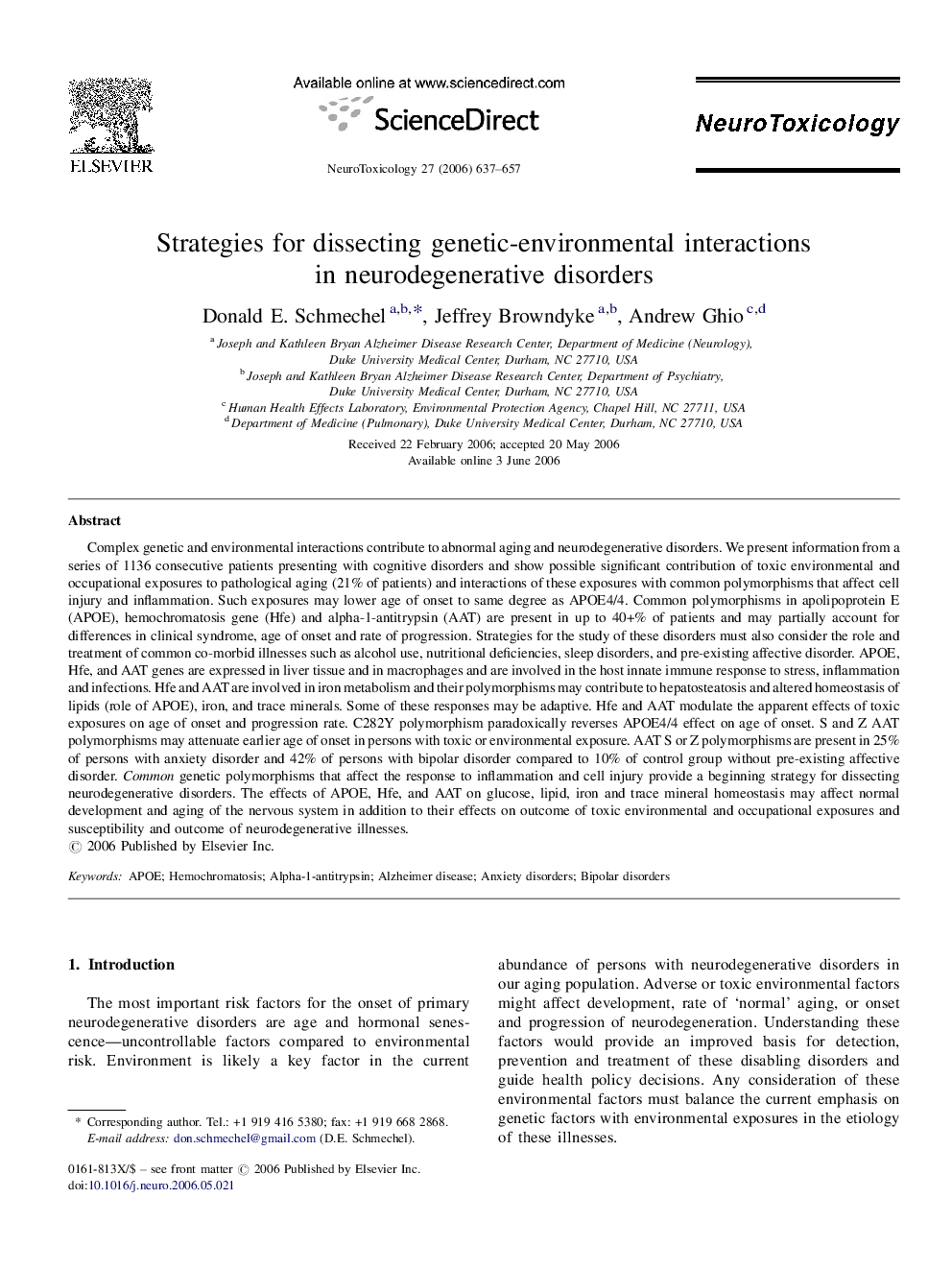| کد مقاله | کد نشریه | سال انتشار | مقاله انگلیسی | نسخه تمام متن |
|---|---|---|---|---|
| 2590581 | 1131753 | 2006 | 21 صفحه PDF | دانلود رایگان |

Complex genetic and environmental interactions contribute to abnormal aging and neurodegenerative disorders. We present information from a series of 1136 consecutive patients presenting with cognitive disorders and show possible significant contribution of toxic environmental and occupational exposures to pathological aging (21% of patients) and interactions of these exposures with common polymorphisms that affect cell injury and inflammation. Such exposures may lower age of onset to same degree as APOE4/4. Common polymorphisms in apolipoprotein E (APOE), hemochromatosis gene (Hfe) and alpha-1-antitrypsin (AAT) are present in up to 40+% of patients and may partially account for differences in clinical syndrome, age of onset and rate of progression. Strategies for the study of these disorders must also consider the role and treatment of common co-morbid illnesses such as alcohol use, nutritional deficiencies, sleep disorders, and pre-existing affective disorder. APOE, Hfe, and AAT genes are expressed in liver tissue and in macrophages and are involved in the host innate immune response to stress, inflammation and infections. Hfe and AAT are involved in iron metabolism and their polymorphisms may contribute to hepatosteatosis and altered homeostasis of lipids (role of APOE), iron, and trace minerals. Some of these responses may be adaptive. Hfe and AAT modulate the apparent effects of toxic exposures on age of onset and progression rate. C282Y polymorphism paradoxically reverses APOE4/4 effect on age of onset. S and Z AAT polymorphisms may attenuate earlier age of onset in persons with toxic or environmental exposure. AAT S or Z polymorphisms are present in 25% of persons with anxiety disorder and 42% of persons with bipolar disorder compared to 10% of control group without pre-existing affective disorder. Common genetic polymorphisms that affect the response to inflammation and cell injury provide a beginning strategy for dissecting neurodegenerative disorders. The effects of APOE, Hfe, and AAT on glucose, lipid, iron and trace mineral homeostasis may affect normal development and aging of the nervous system in addition to their effects on outcome of toxic environmental and occupational exposures and susceptibility and outcome of neurodegenerative illnesses.
Journal: NeuroToxicology - Volume 27, Issue 5, September 2006, Pages 637–657